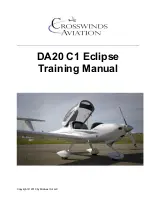
Propeller Owner’s Manual
139
ANTI-ICE AND DE-ICE SYSTEMS
61-00-39
Page 7-3
Rev. 17 Apr/20
1. Anti-ice System Description
(Rev. 1)
WARNING:
CONSULT THE PILOT OPERATING
HANDBOOK (INCLUDING ALL
SUPPLEMENTS) REGARDING FLIGHT
INTO CONDITIONS OF KNOWN ICING. THE
AIRCRAFT MAY NOT BE CERTIFICATED FOR
FLIGHT INTO KNOWN ICING CONDITIONS,
EVEN THOUGH AN ICE PROTECTION
SYSTEM IS INSTALLED.
NOTE
: There are many configurations of anti-ice
systems. This section provides a general
overview of system operation. Consult the
airframe manufacturer’s manual for a description
of your specific anti-ice system and controls.
A. Overview of an Anti-ice System
(1) A propeller anti-ice system prevents formation of ice
on the propeller blades. The system dispenses a liquid
(usually isopropyl alcohol) onto the propeller blades.
This liquid mixes with moisture on the blades and lowers
the freezing point of the water, allowing the water/alcohol
mixture to flow off of the blades before ice forms.
(a) Anti-ice systems must be in use before ice forms.
This system is not effective for removing ice after it
has formed.
B. Components of an Anti-ice System
(1) A typical anti-ice system includes the following
components:
(a) Fluid tank, pump, slinger ring, blade mounted
anti-icing boots, and fluid dispensing tubes located
at each blade mounted anti-icing boot
C. Anti-ice System Operation
(1) The anti-ice system is typically controlled by the pilot
using a cockpit mounted rheostat. The rheostat controls
the pump and the flow of anti-ice fluid from the fluid tank.
(2) The anti-ice fluid is pumped through airframe mounted
distribution tubing and into a rotating slinger ring that is
mounted on the rear of the propeller hub.































